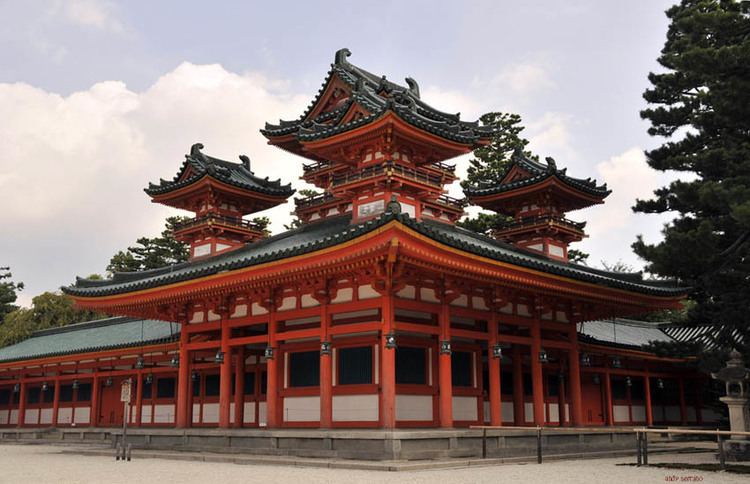 | ||
Yamashiro Province (山城国, Yamashiro no Kuni) was a province of Japan, located in Kinai. It overlaps the southern part of modern Kyoto Prefecture on Honshū. Aliases include Jōshū (城州?), the rare Sanshū (山州?), and Yōshū (雍州?). It is classified as an upper province in the Engishiki.
Contents
Yamashiro Province included Kyoto itself, as in 794 AD Yamashiro became the seat of the imperial court, and, during the Muromachi period, was the seat of the Ashikaga shogunate as well. The capital remained in Yamashiro until its de facto move to Tokyo in the 1870s.
History
"Yamashiro" was formerly written with the characters meaning "mountain" (山) and "area" (代); in the 7th century, there were things built listing the name of the province with the characters for "mountain" and "ridge"/"back" (山背国). On 4 December 794 (8 Shimotsuki, 13th year of Enryaku), at the time of the christening of Heian-kyō, because of the resultant scenic beauty when Emperor Kanmu made his castle utilizing the natural surroundings, the shiro was finally changed to "castle" (山城国).
Just from Nara period writings, it is apparent that the "area" (山代国) and "ridge" (山背国) listings coexisted.
The provincial capital, according to the Wamyō Ruijushō, was Kaya Imperial Villa (河陽離宮, Kaya Rikyū).
In the Shūgaishō, Otokuni District is mentioned as the seat, as well as in the Setsuyōshū.
As for the shugo's mansion, at first, Yamashiro Province shugo and Kyoto shugo were concurrent posts, so the Kyoto shugo's kogenin's mansion had to be allotted. Afterwards, the Rokuhara Tandai came to be an additional post, and that became the shugo as well. In the Muromachi period, Yamashiro Province was divided with the Uji River as the border into two districts, and each came to be assigned a shugo, so one shugo resided in Uji Makishima, whereas the other resided in various places around Yodo and such.
Temples
The provincial temples included those where the resident chief priest was a man, and those where it was a woman in Sōraku District. Kuni no Miya's Daigokuden was made a temple in 746. It was destroyed by fire in 882, and the rebuilding afterwards would decline. In the Kamakura period, it came to be a branch temple of Byōdō-in. The location is in modern Kizugawa city, coinciding with Kamo. In 1925, a large number of old tiles were excavated near the provincial temple, and it is thought that these once belonged to the convent.
The Kamo Shrines -- the Kamigamo Shrine in the Kita ward of Kyoto and the Shimogamo Shrine in Sakyō ward -- were designated as the two chief Shinto shrines (ichinomiya) of Yamashiro province.
Yamashiro's ichinomiya designation differed from other provinces', likely due to the Jingi-kan; from nearly the end of the 11th century, when the primary shrines were being established in each of the various provinces, it is thought that in Kinai, it was decided on after the turn on the 12th century. There were no ninomiya (secondary shrines). It is unknown whether there were any sōja.
